Early Verdict
Ricoh has achieved something remarkable with the Theta Z1. It uses much larger 1-inch sensors than regular 360 cameras to offer the potential for much better image quality, but it’s achieved this without making the camera significantly bigger. We look forward to testing the Theta Z1 properly when it’s finished, but in the meantime it looks like a very exciting step forward for affordable 360 imaging.
Pros
- +
1-inch sensors
- +
Robust alloy construction
- +
OLED information display
Cons
- -
More expensive than the Theta V
Why you can trust Digital Camera World
As we reported in our Ricoh Theta Z1 news story, Ricoh’s new 360 camera might look like the previous Theta V and indeed a host of rival models, but it represents a major step up both in image quality and technical ambition.
It follows the design of other 360 cameras, with ‘overlapping’ 180+ degree lenses that produce a seamlessly stitched 360 image, but where other cameras use small 1/2.3-inch sensors like those found in smartphones and point and shoot cameras, the Theta Z1 takes a massive step up, using a pair of much larger 1-inch sensors.
The resolution of the images captured may be similar, but the Theta Z1’s much larger sensors should give far better low-light performance, dynamic range and all-round image quality in a type of camera that – until now – has been fine for casual/enthusiast use but not really up to professional capture standards.

The Ricoh Theta Z1 offers a maximum sensitivity of ISO 6,300, three aperture values of f/2.1, f/3.5 and f/5.6, and a maximum shutter speed of 1/25,000sec. What’s more, it doesn’t just capture JPEG images in-camera, it can also capture raw files in the DNG format, which can then be stitched on a computer using a soon-to-be-released Lightroom add-on.
The Z1 captures still images at a resolution of 6,720 x 3,360 pixels and 360 4K movies are captured at 30fps at a resolution of 3,840 x 1,920 pixels. It also has a rotating 3-axis image stabilisation system, though it’s just as likely that the Theta will be used on a stand. Ricoh told us that it sees the Theta Z1 as appealing to a more upmarket audience than consumer-orientated cameras like the Insta360 ONE X, but without the bulk and expense of true professional 360 devices.
Build quality and handling
Despite the much larger sensors and correspondingly larger sensors, the Theta Z1 doesn’t feel substantially larger than the Theta V (which will continue to be sold alongside the new model). The body is a little thicker and the lenses are a little larger, but this is still a camera you could easily fit in a shirt pocket.
We were looking at a pre-production version at The Photography Show, so we couldn’t take any sample images to share here, but Ricoh has published samples of its own which you can view below (these are 360 images, so they look odd viewed as 'flat' images but are rendered suitably when opened in photo-editors which support 360 images):
The best camera deals, reviews, product advice, and unmissable photography news, direct to your inbox!

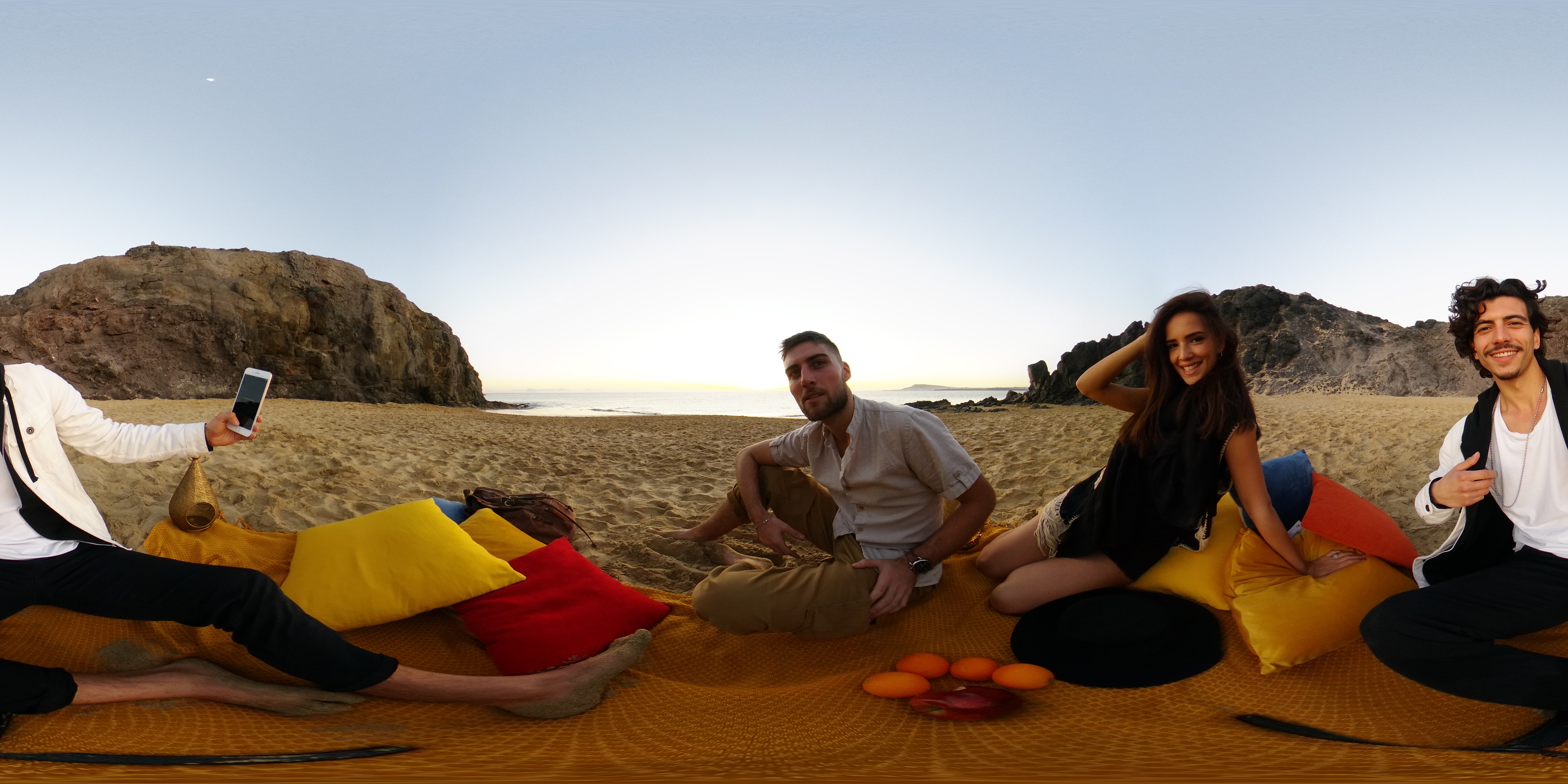
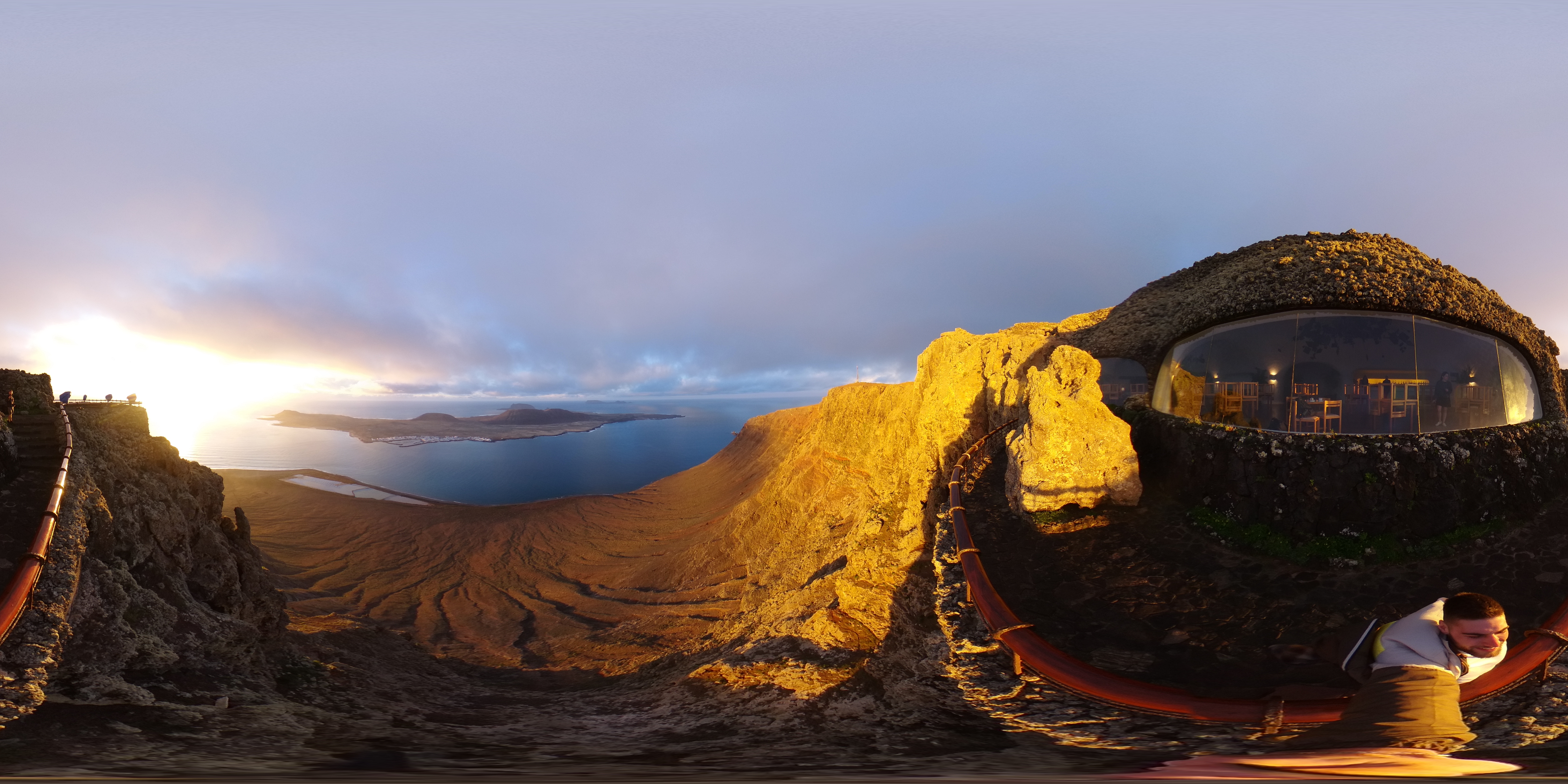

The magnesium alloy body has a matt finish and does have a real quality feel. The OLED status display is sharp and clear with lots of contrast and displays battery and Wi-Fi status and the number of images remaining. The Theta Z1 has 19GB internal storage with no memory card slot, which sounds like it could be a limitation, but in the base there’s a USB -C connector so you could connect an external storage device.
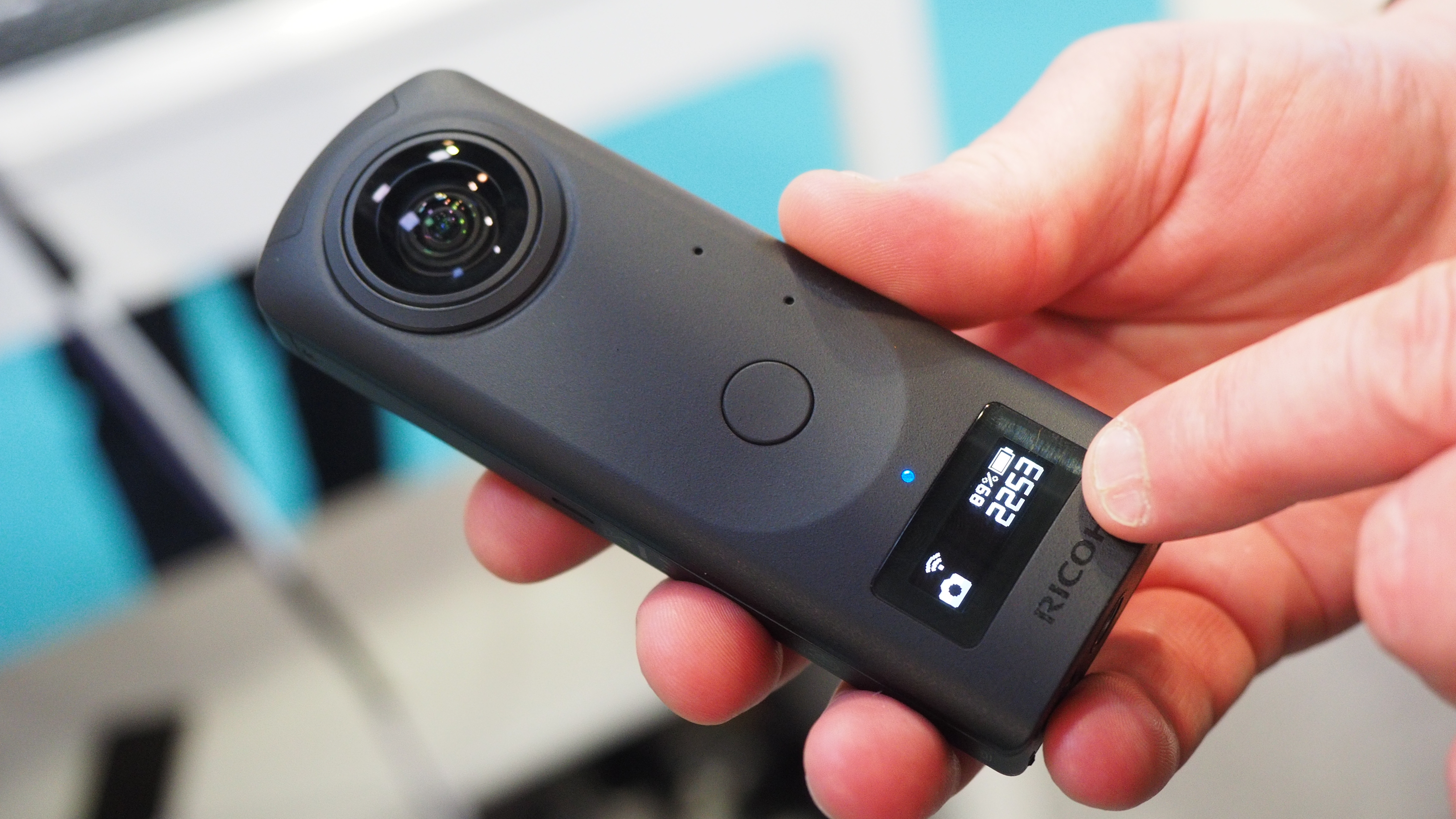
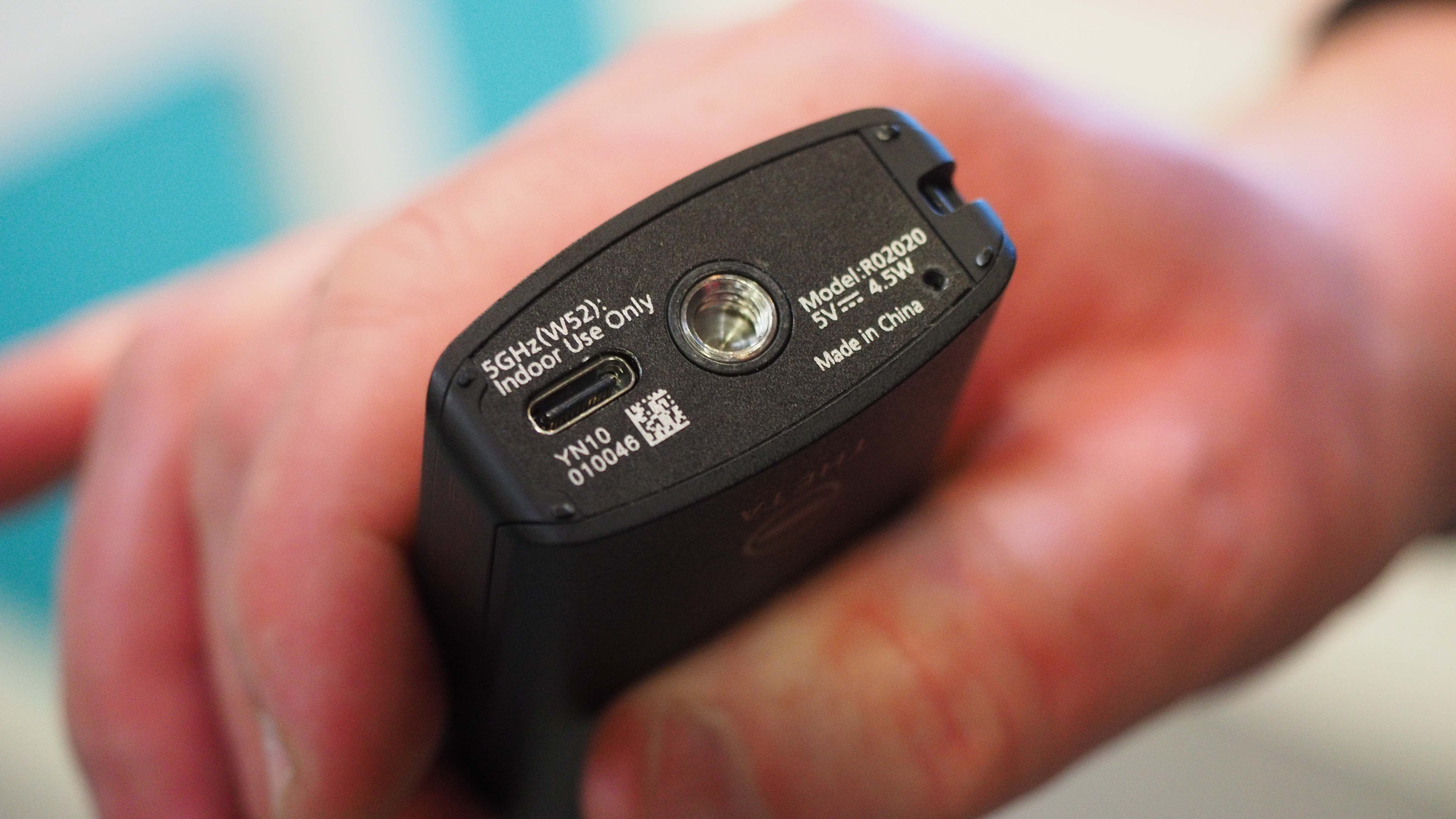
You can use the Theta Z1 handheld as a standalone device, and operation is very straightforward, with a prominent shutter release button in the centre of the body. It’s more likely, though, that you’ll mount it on a stand and use the dedicated app on your smart device to adjust the camera settings an initiate the capture.
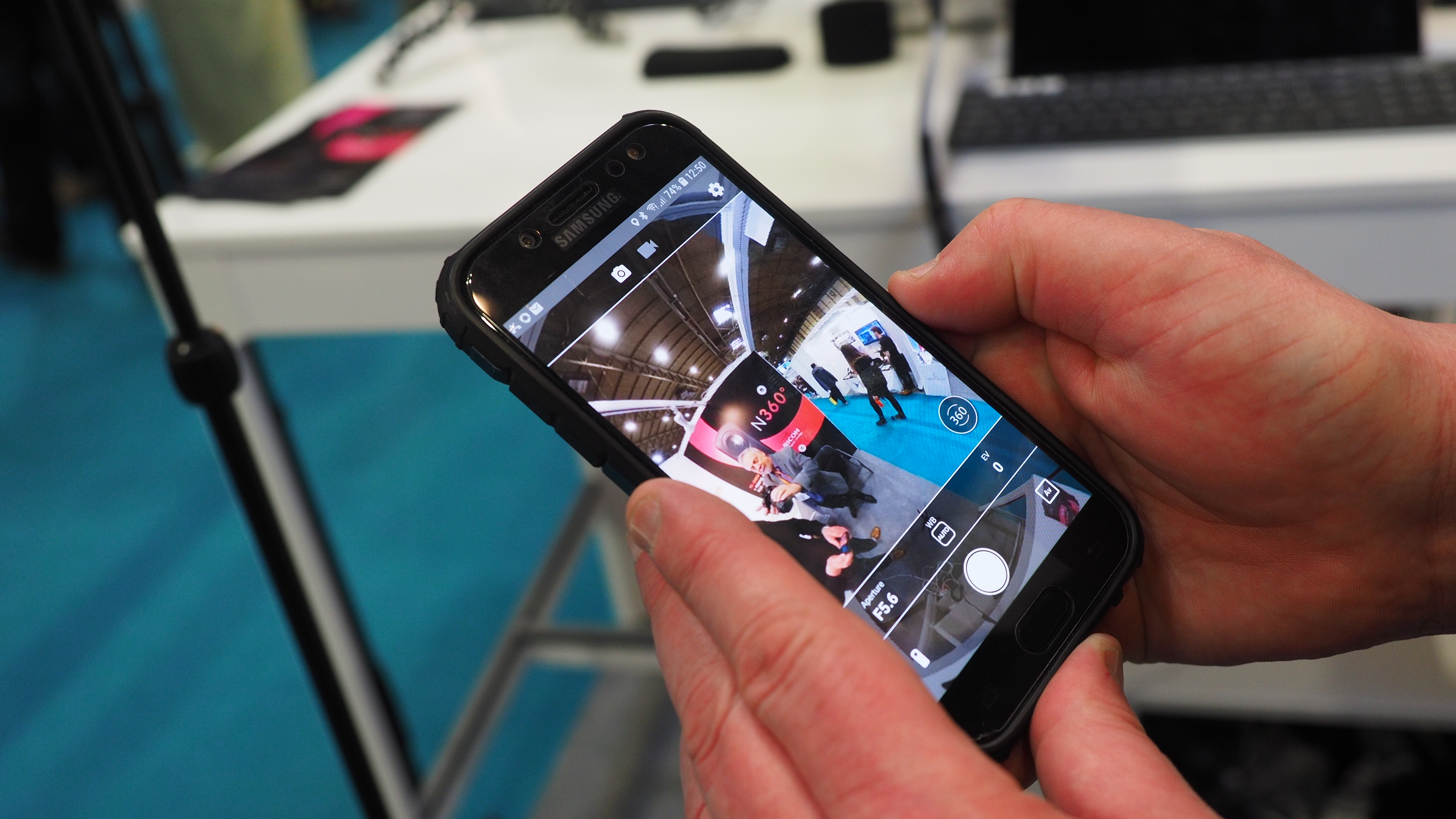
We were able to see the Android version in action, but the iOS version for iPhone and iPad is not quite ready yet.
The Theta Z1 measures just 132.5 x 48.0 x 29.7mm, weighs182g and goes on sale late March 2019 for £899.99/$999.
Early verdict
Ricoh has achieved something remarkable with the Theta Z1. It uses much larger 1-inch sensors than regular 360 cameras to offer the potential for much better image quality – but it’s achieved this without making the camera significantly bigger. We look forward to testing the Theta Z1 properly when it’s finished, but in the meantime it looks like a very exciting step forward for affordable 360 imaging.
Read more:
• The best 360 cameras
• Ricoh Theta Z1 360 camera is announced
• The Insta360 EVO bends over backwards for 360 capture or 180-degree 3D
• Nassari360 turns your images and videos into 360-degree ‘experiences’
• Are 360s the new selfies?

Rod is an independent photography journalist and editor, and a long-standing Digital Camera World contributor, having previously worked as DCW's Group Reviews editor. Before that he has been technique editor on N-Photo, Head of Testing for the photography division and Camera Channel editor on TechRadar, as well as contributing to many other publications. He has been writing about photography technique, photo editing and digital cameras since they first appeared, and before that began his career writing about film photography. He has used and reviewed practically every interchangeable lens camera launched in the past 20 years, from entry-level DSLRs to medium format cameras, together with lenses, tripods, gimbals, light meters, camera bags and more. Rod has his own camera gear blog at fotovolo.com but also writes about photo-editing applications and techniques at lifeafterphotoshop.com

